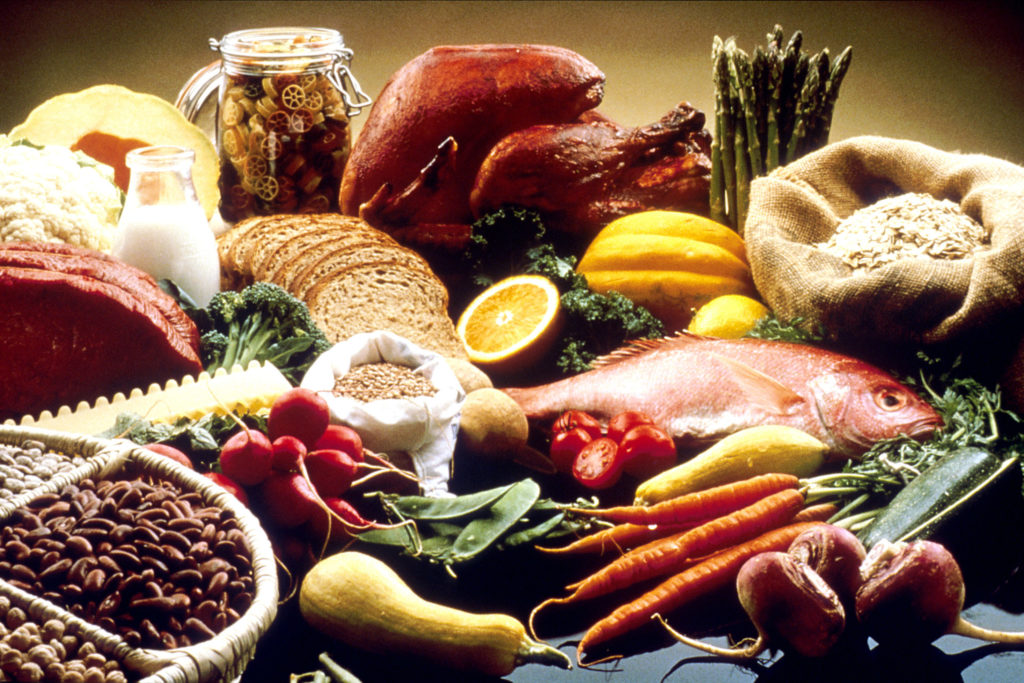
Your Healthy Eating Plan: Tips on Staying Fit and Preventing Cancer
A Healthy Eating Plan: How to build it, keep it, and love it.
We all know that unhealthy eating habits and a sedentary lifestyle are two prime factors that cause excess body weight. But, most noteworthy is how excess weight can lead to heart disease, diabetes, and several types of cancer.
This includes 2 of the most common types of cancer – breast and bowel cancers — and 3 of the hardest to treat – pancreatic, oesophageal, and gallbladder cancers.
So, if you’ve been exercising, yet are still overweight, here’s your truth bomb:
Although regular physical exercise is important, it alone will not make you healthy.
To achieve the kind of health that will make you feel good and prevent life-threatening diseases, you must also have a healthy eating plan. You might be thinking: Why does it matter what I eat?
Aren’t all calories the same?
That’s the million-dollar question that these snack food companies love. But here’s what they’re not telling you…
While all calories provide fuel, the truth is:
We don’t process all fuel in the same way. And if you can’t process the fuel, it just sits there as fat.
Research from the Department of Nutrition at Harvard School of Public Health shows that food quality is in fact very important to maintaining a healthy weight. Therefore, the notion that “a calorie is a calorie” is a superficial half-truth. Here’s what lies beneath…
Fats, Carbs and Energy
You’ve probably heard that a high fat and high carbohydrate diet, coupled with a sedentary lifestyle, is bad for our physical and mental health. Probably straight from your doctor’s mouth.
But did you know that these foods create an addictive reaction in our brains?
Now you know why it seems that you crave them more every day once you start eating fatty or sugary foods. As a result, your taste buds grow overly accustomed to these foods. And, double-whammy, you lose the taste for more subtle and natural flavours.
That’s not just my opinion. Dawn Jackson Blatner, RD, LDN, an American Dietetic Association spokesperson and the author of The Flexitarian Diet has this to say:
“Availability, accessibility, parental and peer consumption, exposure to foods, and habit all play a role in what foods we enjoy.”
Yet, while we may be born with certain taste preferences, environmental factors can also determine what foods we crave.
By now, you’re likely thinking: Oh no, not my favourite snacks! So do I need to give them up?
The short answer is yes.
Because that little twinge of panic you felt? That’s the food addiction these experts are referring to.
If you really want to stop craving the foods that sabotage your fitness, you need to cut them out of your life.
To break the yo-yo weight gain/loss, you’ve struggled with your whole life. First, you need to change your “environmental factors.”
Think about it: If a friend leaves you feeling lousy whenever you visit them, we call that toxic. Same goes for foods.
Processed foods create insulin spikes and crashes, leaving you lethargic. Consequently, this inactivity means those calories don’t get used. Rather than energizing you, they cling to other fat cells. So you eat more of these bad foods, hoping for more energy. But they let you down. Again and again.
Let’s face it: These foods are sabotaging you. They are not your friends.
Isn’t it time you said:

Snap! Bye, Felicia!
But… How can we stop loving toxic foods and start living a healthy eating plan?
You Can Retrain Your Taste Buds
Amazing, right? Our bodies are built to adapt. That’s how we’ve survived and evolved.
As a result, you can learn to enjoy eating what your body really needs: Whole fruits. Vegetables. Lean proteins. Make the bulk of your meals these delicious ingredients and you’ll lose weight naturally without harsh dieting.
Here are some tips to integrate good foods into your meals:
- Cultivate a taste for whole foods through repeated exposure. For example, the Monell Chemical Senses Center research found that when people consumed a bittersweet beverage each day for one week, they wound up liking it 68 percent more than they did initially. Start with an orange. Then introduce dark greens like arugula, kale. But stay away from processed store-bought dressings. Instead, create your own (recipe below).
- Eat whole grains or vegetable starch not processed grains/breads. If this idea is foreign to you, try blending 1/3 brown rice and 2/3 white rice at first. Then increase the brown rice ratio. Want a pro-tip? Shred cauliflower into little “grains,” like rice —and add that to freshly cooked rice. You’ll cut calories in half, reduce starch and add a healthy vegetable to your meal in one go.
- Limit the variety of flavours per meal. Sounds odd, but think about it. How often do you overeat at buffets and holiday parties? That’s due to something called sensory-specific satiety. However, limiting flavours in foods, or limiting the kinds of snacks you have on hand, will get you fuller quicker, and reduce overeating.
- Don’t starve yourself! That’s right. You may think just because you’re reducing calories. You will continue to lose weight. But, instead, what happens is your body goes into starvation mode. That’s where your metabolism slows to conserve what meager calories you’re providing it. And then—blammo — as soon as you start eating regular-sized meals again, your body frantically conserves all those calories for safe-keeping. You guessed it: as fat.
What’s the worst thing about starvation diets? You’re hungry all the time! Tired. Cranky. Hangry. Who needs that kind of life?
Say No To Starvation Diets
Instead of starving yourself, try food combinations that help you burn fat. Think crunchy foods full of fiber and water like cabbage and celery. Add spices that increase metabolism and circulation, such as red pepper, cinnamon and ginger. Finally, include a protein to build muscle and keep you full longer. Don’t forget to limit sugar, white bread, white rice, and white pasta because those create insulin spikes that make you hungry sooner.
Do potatoes give you insulin spikes? Try parsnips, carrots, or sweet potatoes instead (recipes here).
Ready to get started? Here you go…
Your Good Foods Shopping List:
- Oatmeal and barley (add spices for health benefits and taste)
- Brown rice (add spinach, sliced almonds and seeds/nuts)
- Quinoa (ditto as above)
- Dark Green Vegetables (add tahini dressing)
- Low-starch Veggies (make cauliflower “rice” or parsnip mash)
- Lean protein (add herbs for vitamin K)
- Fruits
- Nuts (in moderation)
- Legumes (add lemon, garlic and herbs)
- Mushrooms (a low cal/no fat protein source)
- Dairy products (in moderation)
By now, you’re probably wondering…
What about Fats?
Good question! Remember all those fat-free snack foods in the 90s? Turns out, they actually made us gain weight! That’s because the seasoning and carbs in them triggered over-eating. And being nutritionally-poor, they did not provide lasting satiety. So in a nut-shell: Fat-free does not work!
The trick? Replace bad fats with good fats: We’re talking coconut oil, omega-rich fish, and avocados. These help you feel full.
Fish oil can reduce joint pain and increase brain function. And olive oil protects against heart disease. Tahini is rich in calcium and protein. And another thing: They’re delicious!
Just remember: oils are fats and therefore should be consumed in reasonable amounts. The worse oils are in processed condiments and snacks. That’s why I make my own healthy salad dressing with lemon juice, nut/seed butter, and olive oil. Don’t like garlic? No problem! Add mustard instead, or a touch of honey, yogurt… whatever works with your dish.
Now you’ve replaced processed foods with healthy-ingredient foods, how do you stick to the plan?
Keep a Food Journal
As you can see, a healthy eating plan is not dull. Spices, garlic, dried fruits, fresh herbs and other natural seasonings taste great. And they add health benefits, too!
But did you know that a food journal can also help?
By charting your daily calories and cravings, you can learn what works and what doesn’t work for you. You can predict your afternoon sugar cravings and cut them off before they occur.
For instance, to block your daily 4pm coffee and muffin craving, drink a bottle of water or unsweetened tea at 3:30. Then, go for a quick walk or do a yoga stretch.
Hey, if anyone looks askance, shrug and say: “Some people take smoke breaks. This is healthier.”
Which reminds me…
Now that you’ve got a new healthy eating plan…
Time to include some daily exercise!
No need to go “Biggest Loser” on us. Slow and steady win the race.
While a marathon is an awesome goal, it’s the little steps each day that lead you there.
Do the things you already love first: Dance to your favorite song, take the stairs, stand more often at your desk, do sit-ups at home between commercials. Whatever it takes to get you moving! You’ll feel better, eat less, and sleep more soundly, too.
Soon, you’ll want to increase your activity and your bad cravings will diminish because you’ve replaced them with healthy habits. Habits that will change your life for good.
Want more info on getting healthy and fit? Leave a comment below or email: troy
To learn more about the link between obesity and cancer, watch this video from Cancer Research UK. And thanks for reading!
